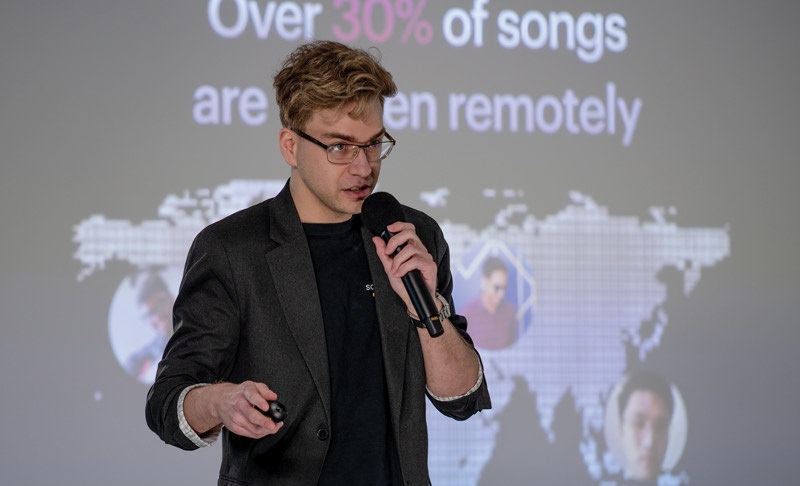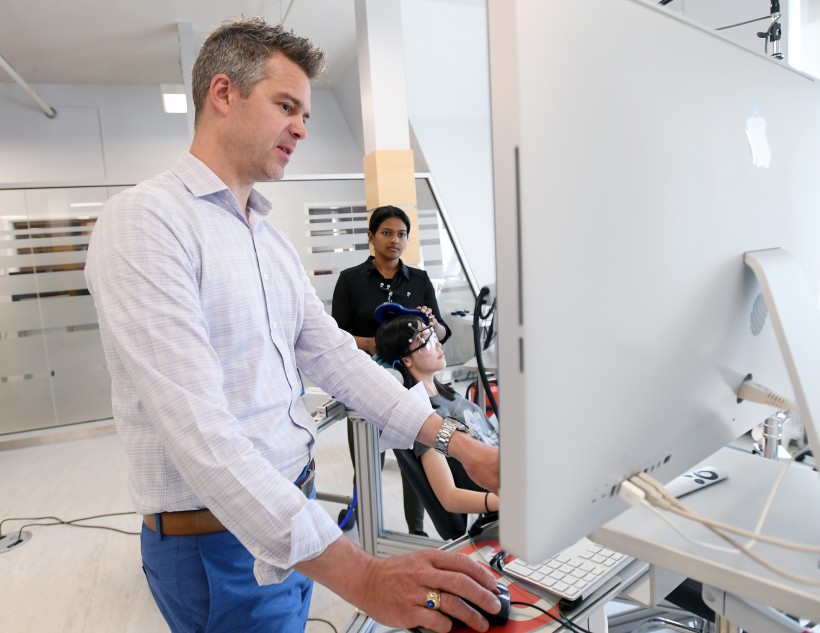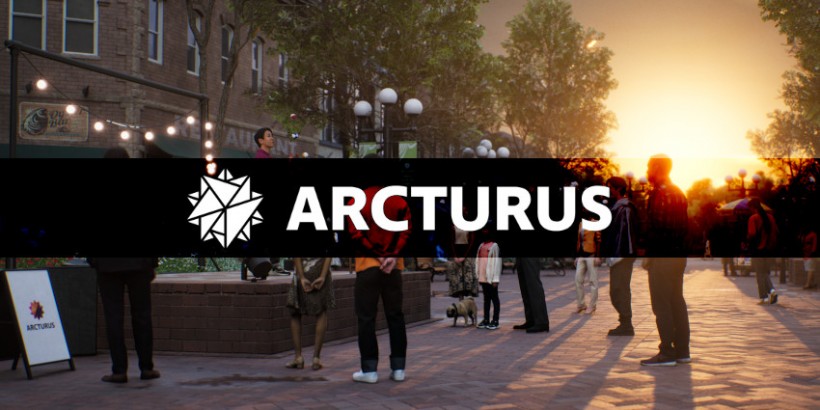Sponsored Content
When Dalhousie University neuroscientist Dr. Shaun Boe set out to study how visualization could help rehabilitate stroke survivors, he didn’t expect to find himself rethinking an entire field of research. But close to a decade later, that’s exactly what he’s doing.
Boe runs the university’s Laboratory for Brain Recovery and Function, which he originally conceived as a vehicle for studying what he calls “mental rehearsal,” and how it could help patients heal from brain damage.
Mental rehearsal is the process by which visualizing an activity can help someone learn how to do it in the real world. In theory, imagination can activate many of the same areas of the brain as actual movement, so mental rehearsal has been theorized to create neuropathways resembling those that develop during physical practice.
“There have been lots of studies that have shown that when you do this mental rehearsal or this mental practice, you can drive changes in the brain,” he said in an interview. “You can ultimately start to learn new skills just through imagined practice.”
The technique is popular with athletes, who risk injury if they overdo their real-world practice, and surgeons, who have limited access to operating theatres.
Boe’s work is the result of a fascination with brain-body interaction that dates back to his undergraduate degree.
He remembers having his interest sparked by an experiment described to him by one of his professors while he was studying physical education at Brock University in Ontario. In the experiment, researchers discovered that a cat with a damaged spinal column could still walk on a treadmill, even though the injury should have interfered with its brain’s ability to control its muscles.
“As a second year, it just kind of blew my mind,” he said. “Like, ‘What the heck is going on here?’”
The Role of the Nervous System in Movement
His excitement spurred him to earn a master’s degree in physical therapy and a PhD in kinesiology from Western University, where he focused on the role of the nervous system in movement.
Because the brain is neuroplastic -- capable of reshaping itself in response to the demands placed on it -- Boe and many of his counterparts at other universities initially believed that mental rehearsal could be used as a substitute for physical rehab in brain injury cases. The premise was that both activities would encourage the brain to heal in much the same way.
For example, Boe says that many researchers once believed that a stroke survivor who was learning to walk again could practice actual walking until they had run out of energy, and then switch to visualization for many of the same benefits.
As he and his team began to look closer, though, they discovered a problem: science’s understanding of how mental rehearsal affected the brain was badly incomplete.
The issue stemmed from a disconnect in the type of research that was being conducted. Most studies at that time were focused on what Boe describes as clinical research, which centred on testing whether or not mental rehearsal could yield noticeable improvements in actual patients.
What was being neglected was theoretical research. Scientists were not exploring the actual, neurological mechanisms of visualization. They didn’t fully understand how or why it worked, so when they designed clinical experiments, they were essentially flying blind.
“Our thinking is that people have jumped the gun a bit. We don’t really understand what the parameters are,” he said. “Until you know those kinds of things, you really shouldn’t do a carte blanche approach.”
Dal's Seto: Pioneering Communications between Autonomous Vehicles
Movement, Boe explains, is a complex and cognitively demanding task that requires participation from many regions of the brain. Even simple actions involve memory, visual processing and tactile processing, among other systems.
When Boe opened his laboratory, it was unclear which of these components could be simulated by mental rehearsal. And similarly unknown were the nuts and bolts of how the process should be incorporated into a rehab regimen.
“One example is people in clinical trials have recruited patients who have [had] strokes, and they’ve randomized them into a treatment group and a non-treatment group, and then they go to it,” he says. “But they don’t control for things like what part of the brain is damaged, and that’s a mistake, I think.”
In fact, despite promising clinical research, attempts to implement mental rehearsal at scale showed that a broad, one-size-fits-all approach produced results that were mixed at best.
Boe decided to try a different tack. He started using medical imaging equipment, such as MRI machines, to test the effects of visualization in patients with healthy brains. And by 2015, the new strategy had won him a five-year grant from the Natural Sciences and Engineering Research Council of Canada, or NSERC.
“I’m pretty sure I can count on my fingers and toes the number of labs in the world that are doing this,” he said.
His unusual approach soon paid dividends. He and his team began to find that they could identify which parts of the brain were most involved in visualization. They could then compare that data to the brain activity of test subjects engaging in real movement, with the aim of illuminating the underlying processes at play.
One particularly revealing conclusion they drew was that mental rehearsal was, in fact, more useful if it was used early in the process of learning or relearning a task.
Boe likens the benefits of visualization early in the learning process to building a scaffolding on which to hang the more complex processes of physical movement.
“In the paper, we make an argument that imagery lays down this foundation on which you can then build the skill through real practice,” he says.
Experiments in Visualization
His team made the discovery by running an experiment in which one group of participants learned a new task by practising first mentally and then physically, while a second group followed the inverse order. A third, control group did only physical practice. At the end of the experiment, the first group showed noticeably more improvement than the others.
This means that when medical professionals instruct patients to switch to visualization once they become exhausted, the two options are being used in the wrong order.
Another problem that Boe and his team are making progress on solving is the issue of determining whether patients are doing their visualization work correctly.
This problem was vividly demonstrated by an experiment in which Boe and his staff taught their subjects the basics of mental rehearsal, then asked them to rate how good they were at it, gave them time to practice and then asked them to provide an additional rating.
The second request consistently sparked admissions from the subjects that, in hindsight, their first self-ratings had been far too generous.
The solution seems to be a series of questionnaires that require patients to solve puzzles related to spatial awareness, without physically acting out the questions. Patients who perform well on the questionnaires can be relied on to do their mental rehearsal exercises properly.
Boe works out of Dalhousie’s School of Physiotherapy, in the Faculty of Health. It’s a small-scale operation, with only eight or nine tenure and tenure-track faculty members. The rest of the teaching is done by graduate students and PhD candidates.
It is not other physiotherapy staff members with whom he most often partners, though, but researchers from other departments.
“We collaborate with people in the Faculty of Science, lots of people in the Department of Psychology and Neuroscience,” said Boe. “We have collaborators in the faculty of medicine and then clinical collaborators, as well, at the hospital.”
One professor with whom he frequently works is kinesiologist David Westwood -- an expert on learning and how the brain controls body movements. Another is Aaron Newman, chair of Dalhousie’s Department of Psychology and Neuroscience, who Entrevestor recently reported to be part of a $2.5 million national project to study the relationship between literacy and digital technology.
Boe’s research has also given rise to a startup, Axem Neurotechnology, which builds devices that use heat-sensors to track blood flow in the brain and offer feedback about whether users are doing their mental practice properly.
The company was founded by three of Boe’s students: Tony Ingram, Chris Friesen and Mike Lawrence. They originally approached Boe after his lab’s tentative first steps towards commercializing similar devices faltered thanks to the complexities of patent law.
They now split their research activities between their headquarters at Volta and Boe’s facility at Dalhousie. He offers assistance and feedback, but has no financial interest in Axem because it would interfere with his ability to apply for grants.
His own work, though, is far from finished. Last month, NSERC renewed his funding for another five years.
He plans to use the money to study the role that mistakes during mental rehearsal play in forming correct neuropathways.
“We’re going to look more at how we actually learn through errors,” he said. “What are the mechanisms?”
Sponsored by Dal Innovates
Dal Innovates provides opportunities for students and faculty at Dalhousie University to explore and experience innovation and entrepreneurship and develop knowledge, skills, and attitudes necessary to translate new ideas into innovations. We empower our students & faculty to be the best innovators, creators and entrepreneurs and make an impact on local and global challenges.











